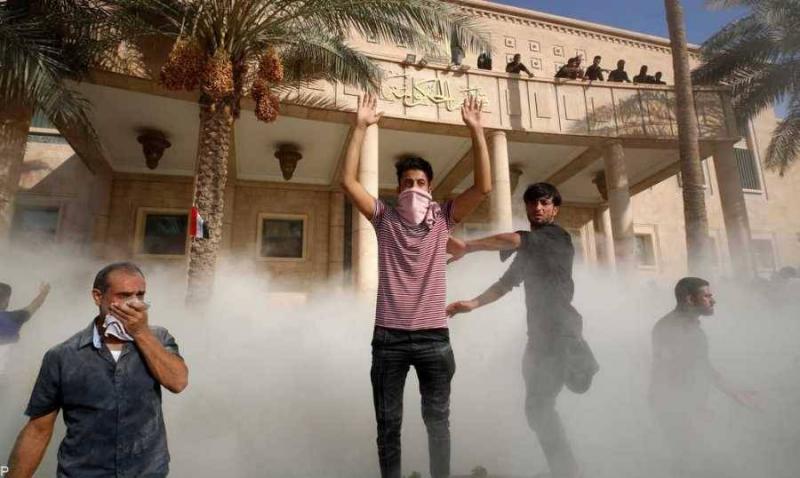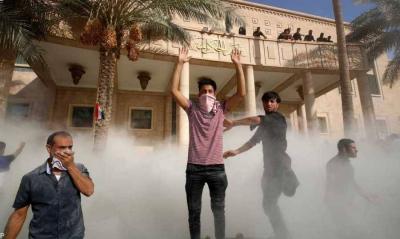In that moment, the state did the bare minimum and distanced its institutions, especially military and security ones, from what the competing powers for authority and wealth resorted to. According to an eyewitness of the recent events, a state unable to monopolize violence becomes captive to entities able to exercise it. Armed forces outside the state resort to violence whenever faced with a threat. In the current Iraqi crisis, violence has become part of the nature of the solution, regardless of its results or costs. The scene of fighting in the streets of Baghdad and some southern cities revealed the level of conflict among armed Shiite political forces and the difficulty of their future coexistence. This is due to the fact that, after exhausting state resources and wealth through consensus, these factions could not arrive at a formula for a ruling majority and an opposing minority, and they are now approaching a bloody equation of victor and vanquished.
In reality, the ruling Shiite political forces since 2003 have failed the hardest test, which adds to their evident downfall alongside their partners from other components in managing the state for the past 19 years. The Iraqi political class, across all its spectrums, has not managed to establish a stable political system that allows for a peaceful transfer of power. However, the danger of what has occurred is that it has opened a new conflict that is different in nature from all previous conflicts witnessed in Iraq since the fall of Saddam Hussein; a conflict with both local and external dimensions, each with steep costs.
Regarding the local nature of the repercussions of this new conflict, intra-Shiite fighting has become akin to a historical inevitability in Iraq, which is difficult but not impossible to overcome—if some adventurers respond to what remains of rational voices. The parties to the conflict have abandoned the idea of peaceful coexistence, and more dangerously, resorting to violence will not provide either side with a solution that helps them escape their political predicament or achieve their goals. It will also threaten the role and position of the large majority within the state and society. If violence occurs again, Iraqi Shiites will need decades to repair what will be destroyed and to restore their political, cultural, and social lives.
In its external nature, this conflict is linked to the ever-present neighbor, Iran, as an essential part of the failure of the Shiite political Islam experiment in power and as the official sponsor of most competing forces. However, it now faces a competition and division that is different from before, as the competition among Shiite forces is no longer under its umbrella, and it is unable to control all the strings. Some of these forces refuse to respond to its demands and are keen to show their differentiation from it, and they will not hesitate to use violence to limit the role of those representing its interests in Iraq.
There is also another aspect, apart from the Iranian connection with the Shiite political forces and the stance of Sadr's supporters or that of the Coordination Framework's supporters. However, the most perplexing element that forms a core issue for the future is that there is another Shiite current that was born from the womb of the 2003 regime crisis, which began to crystallize as a national project since October 1, 2019, and is impossible to co-opt or subjugate. It possesses a dynamic completely different from the ideological Shiite currents and parties. Therefore, Tehran will face challenges in adapting to a significant national Iraqi Shiite group that stands in complete opposition to the previous experience.
Consequently, the relationship between Iraqi Shiite forces—the Sadr movement, the Coordination Framework, and the Tishreen (October) forces on one side, and Iran on the other—takes a different form than in the past. More dangerously, both sides (the Sadr movement and the Coordination Framework) are inclined to resort to armed force to achieve two things: their vision of the form of authority and governance, and their vision of the relationship with Tehran. As for the third party, the "Tishreen forces," with their national and small-state dimension and their non-alignment with either side of the armed confrontation, have restored the pacifist nature of the change movement, even if the probabilities of violence are stronger.




